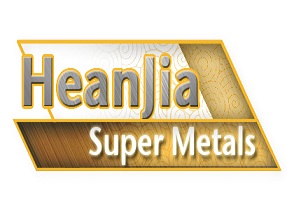You are here: home > Alloys House > Contribution of titanium in the domestic applications
Product (738)
- Pure Nickel Products (38)
- Incoloy Products (74)
- Inconel Products (72)
-
FeCrAl Product
(99)

-
Nichrome Products
(68)

- Monel Products (36)
- Hastelloy Products (49)
- Nickel Iron Alloy Product (59)
-
Nickel Copper alloys
(47)

- Nonferrous Metal Product (27)
-
Resistance Wire
(90)

- Stainless Steel Product (42)
- Mesh Demister (20)
- Others (17)
Product Forms (14)
Quality Certificate (11)
Learning Gallery (30)
Incoloy News (9)
Inconel News (22)
Molybdenum News (7)
Nikrothal News (4)
Nichrome News (13)
Titanium News (2)
Nickel News (8)
Alloys House (30)
Tools (27)
Nickel alloy News (30)
Latest Buzz (30)
nickel chrome copper iron alloys news (28)
Credit Report
Products Index
Company Info
Heanjia Super-metals Co., Ltd. [China (Mainland)]
Business Type:Manufacturer, Trading Company
City: Beijing
Province/State: Beijing
Country/Region: China (Mainland)
Alloys House
Contribution of titanium in the domestic applications
Approximately 50 types of titanium and titanium alloys are identified and now available for utilization, however there are just a couple of titanium alloys are prepared by industrial methods. The ASTM International identifies 31 types of titanium metal and its alloys, out of which 1 out of 4 are completely pure. The titanium alloys are primarily differentiated on the base of their grade of tensile potential, function of oxygen amount with the first grade that is highly ductile since lower tensile strength and oxygen is present by 0.18%.
The four grade has the largest value of tensile strength and oxygen is present by 0.40%. Other grades are alloys, those are produced for particular operations, on the base of ductility, potency, toughness, resistant to current, creep resistance, protect from rust in different mediums.
The four grade has the largest value of tensile strength and oxygen is present by 0.40%. Other grades are alloys, those are produced for particular operations, on the base of ductility, potency, toughness, resistant to current, creep resistance, protect from rust in different mediums.
The levels come under ASTM and other titanium alloys are designed to fulfill the requirements of Aerospace and Defense Industries, ISO Standards and requirements of particular country and end users of aerospace, army, health and commercial purposes.
During manufacturing, titanium welding should be performed in static environment of argon or helium to protect it from contagion with environmental gases like oxygen and nitrogen or hydrogen. The contagion tends to various conditions, like embrittlement, that will decrease the reliability of welds groups and tends to weakness of joints. On the industrial basis pure flat titanium sheet can be produced instantly, however treatment should be done considering the truth of metal memory that it can get back. This certainly happens to some of high potential alloys. It is impossible to solder the titanium without pre-plating it on the metal that is needed to be soldered. Titanium can be processed using certain device and techniques as followed by stainless steel.
Titanium is one of essential components used in manufacturing steel to decrease the grain size and also in the form of deoxidizer. It is used in stainless steel to reduce the concentration of carbon. Titanium is mixed with aluminum, vanadium, copper, iron, manganese, molybdenum and other metallic elements.
The purposes of titanium refined products like titanium mesh and titanium wire are specified in the corporate, aircraft, entertainment and latest markets. The grinded titanium is utilized in the pyrotechnics as a source of glossy flammable materials. Titanium dioxide is widely used as a compound of titanium. In earth, 95% of titanium is found in its ore of titanium dioxide. The white titanium pigment is used in the painting colors, paper, toothpaste and plastic, cement, gemstones, potency carrier in graphite for fishing sticks and golf clubs.
The titanium oxide grinded form is generally inert, opposes loss in sunlight and it is very dense which enable the compound to provide pure and excellent white shade to the chemicals with brown or grey colors that produce the large part of domestic plastic products. Titanium oxide is found in the mineral anatase form and brookite and rutile. The paint produced from the titanium oxide performs well in the elevated temperatures and operate in the ocean applications. Ultimately, the titanium products like titanium sheet also become able to provide high quality performance under severe temperature and water environments.
Pre Page:
Importance of inertness of Titanium...
Next Page:
Introduction to Isotopes of Titanium
.gif)


